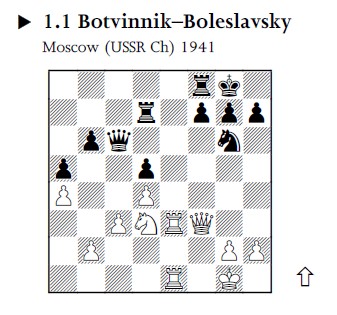
The Chess Book on Strategy Every Russian Kid Has Studied
The last days of January saw an explosion in the orders for the book "Techniques of Positional Play" by IM Valeri Bronznik and FM Anatoli Terekhin. Popular Twitch-streamer Andrea Botez (from the Twitch and YouTube channels "BotezLive") released a video on YouTube featuring fellow streamer WGM Dina Belenkaya. In this video they discuss a position between Lajos Portisch and Bobby Fischer, taken from the book that the video description indicates as "the book on strategy every Russian kid has studied".
Originally written in Russian by Terekhin, later revised and updated by Bronznik, and translated into German, "Techniques" first saw the light of day in 2005. It was translated to English in 2013 by New In Chess and has received overwhelmingly positive critical acclaim since. It takes one glance at the reviews to get a taste of the enthusiasm with which "Techniques" was embraced upon its release.
So, what makes "Techniques of Positional Play" such a highly regarded book?
The key word is "efficiency".
The material has been structured in a very straightforward way. The book is divided into ten chapters of explanation followed by an exercise section in which the reader can apply the knowledge he or she has acquired.
Each chapter is composed of several different techniques that have one overarching theme in common. Each theme as well as each different technique is explained in a short but very clear and easy-to-understand paragraph, followed by a wealth of examples to illustrate the point; each new example adds something new to the reader's understanding of the technique.
The commentary too is efficient. The texts are usually short and to the point, keeping the reader steadily focused on the situation in the game at all times. Where variations crop up, they always do so in service of illustrating the importance of the technique. Additionally, cross-references to other techniques are included where possible. This helps prove the point that many positional techniques are interconnected.
In short, the reader efficiently studies a lot of material at the same time.
Let us peak inside and have a quick look at Technique No.1 Paralysing the knight with the duo of wing pawns.
We start with the surprisingly frequent motif of restricting a knight by the wing pawns: g3/h4 against a Ng6 is the main subject with various mirror image variations.
The opponent is frequently faced with a choice only between different evils:
Opposing with his own rook pawn (...h5 or ...a5) creates weaknesses or is not really possible. Allowing h4-h5 or a4-a5 leaves him at a disadvantage in space, and for the rest of its days the knight can often never find a good square.

The last move was 24...Qd6-c6.
‘Black wants to tie in one of the opposing pieces to the protection of the a4-pawn. In that case, the development of White’s initiative would slow down. But White has at his disposal a clear attacking plan: drive away the Ng6 so as to gain access to the e7-square for his rook and to the e5- and f4-squares for the knight. For that reason, White ignores the petty threat posed by his opponent’ (Botvinnik).
25.g3!
White obviously wants to play h2-h4 as indicated by the authors. You can read the rest of this game and all of Technique No 1 in the PDF.

